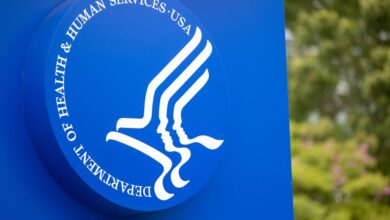Novel Glucagon/GLP-1 Receptor Dual Agonist Improved MASH in Phase II Study

—
Effects may be related to weight loss, not changes in fibrogenesis, expert suggests
by
Katherine Kahn,
Staff Writer, MedPage Today
June 7, 2024
Survodutide, a novel glucagon/GLP-1 receptor dual agonist, improved metabolic dysfunction-associated steatohepatitis (MASH) with no worsening of fibrosis, according to results of a phase II trial.
Among 293 patients with biopsy-confirmed MASH and F1 to F3 fibrosis, improvement in MASH with no worsening of fibrosis occurred in 47% of the patients in the 2.4-mg survodutide group, 62% of those in the 4.8-mg group, and 43% of those in the 6-mg group compared with 14% of those in the placebo group (P<0.001 for the quadratic dose-response curve), reported Arun Sanyal, MD, of Virginia Commonwealth University in Richmond, at the European Association for the Study of the Liver annual conference in Milan.
Results of the trial were simultaneously published in the New England Journal of Medicine.
The glucagon agonist component in survodutide has direct effects on the liver, including increased energy expenditure, lipolysis, and mobilization of hepatic fat, which could contribute to the improvement of fibrosis. Survodutide has also been evaluated for weight loss in another phase II study, and is being evaluated for the management of overweight and obesity in phase III trials. The FDA granted fast track designation to survodutide in June 2021 for the treatment of MASH.
Sanyal also presented results from a subgroup of 219 patients who had paired liver biopsies at baseline and at the end of the study. In this group, 83% of participants in the 4.8-mg survodutide group had improvement in MASH with no worsening of fibrosis versus 18.2% of the placebo group (P<0.0001).
The percentage of participants treated with survodutide who had improvement in fibrosis by at least one stage was about 34% to 36%, compared with a 22% improvement in the placebo group, Sanyal told attendees.
For those in the paired biopsy group, approximately 45% to 50% had fibrosis improvement versus 21% in the placebo group, and MASH resolution occurred in 62.5% of the 2.4-mg survodutide group, 64.2% of the 4.8-mg group, and 63.6% of the 6-mg group, versus 15.2% in the placebo group (P<0.0001 for all).
“Survodutide led to an exceptional fibrosis improvement without worsening of MASH, with up to almost two out of three patients with F2-F3 fibrosis achieving regression of fibrosis after 48 weeks of treatment,” Sanyal said. “These results suggest a possibility of clinical benefit in fibrosis improvement, as well as improved disease activity.”
Survodutide also resulted in a decrease in MRI-measured liver fat content of at least 30% in 63% of participants in the 2.4-mg survodutide group, 67% of those in the 4.8-mg group, and 57% of those in the 6-mg group, versus 14% in the placebo group. In an analysis of patients with paired MRIs, over 80% of patients receiving survodutide had a reduction in liver fat content versus about 20% in the placebo group.
“I think we are going into a period where we’re discussing weight-dependent reversal of fibrosis versus weight-independent [reversal], and this is really impressive weight-dependent reversal of fibrosis,” said Morten Karsdal, PhD, of Nordic Bioscience in Herlev, Denmark, during a Q&A session. “Did you look at any of the fibrogenesis biomarkers … to see if we really deactivate fibroblasts?”
“I think there’s a lot more to be done to better understand the fibrogenic response,” Sanyal replied, noting that data on this topic may soon be forthcoming.
Survodutide also decreased serum alanine transaminase levels by 37.5 U/L and aspartate transaminase levels by 29.4 U/L, Sanyal noted. Weight loss and improvements in blood pressure, hemoglobin A1C, and low-density lipoprotein cholesterol were also observed in the active treatment groups.
In terms of safety, “the side effect profile is quite similar to other GLP-1-based therapies,” Sanyal noted. Nausea, diarrhea, and vomiting were the most common adverse events. Heart rate also increased by up to 3.4 beats per minute in survodutide-treated patients, an effect seen with other GLP-1 agonists, he said.
Serious adverse events occurred in 8% of patients who received survodutide versus 7% in the placebo group. Of participants in the survodutide groups, 20% discontinued treatment compared with 3% in the placebo group.
The treated population in the trial included 293 participants with biopsy-confirmed MASH and fibrosis stages F1-F3. Mean age was 50.8 years, and 53% were women. At baseline, 70% had a nonalcoholic fatty liver disease (NAFLD) activity score of at least 5, 41% had F2 fibrosis, and 35% had F3 fibrosis.
Participants were randomized to receive one of the three doses of once-weekly survodutide or placebo. The first 24 weeks of the study comprised a rapid dose-escalation phase, followed by a 24-week maintenance phase. Histologic improvement in MASH was defined as a ≥2-point decrease in the NAFLD activity score, with a ≥1-point decrease in either lobular inflammation or hepatocellular ballooning.
-
![author['full_name']](https://assets.medpagetoday.net/media/images/author/2N5A0622_180.jpg)
Katherine Kahn is a staff writer at MedPage Today, covering the infectious diseases beat. She has been a medical writer for over 15 years.
Disclosures
The study was funded by Boehringer Ingelheim.
Sanyal and co-authors reported many ties to industry, including to Boehringer Ingelheim.
Karsdal is an employee of Nordic Biosciences.
Primary Source
New England Journal of Medicine
Source Reference: Sanyal AJ, et al “A phase 2 randomized trial of survodutide in MASH and fibrosis” N Engl J Med 2024; DOI: 10.1056/NEJMoa2401755.
Secondary Source
European Association for the Study of the Liver
Source Reference: Sanyal A “Glucagon and GLP-1 receptor dual agonist survodutide improved liver histology in people with MASH and fibrosis: results from a randomized, double-blind, placebo-controlled phase 2 trial” EASL 2024; Presentation GS-006.


